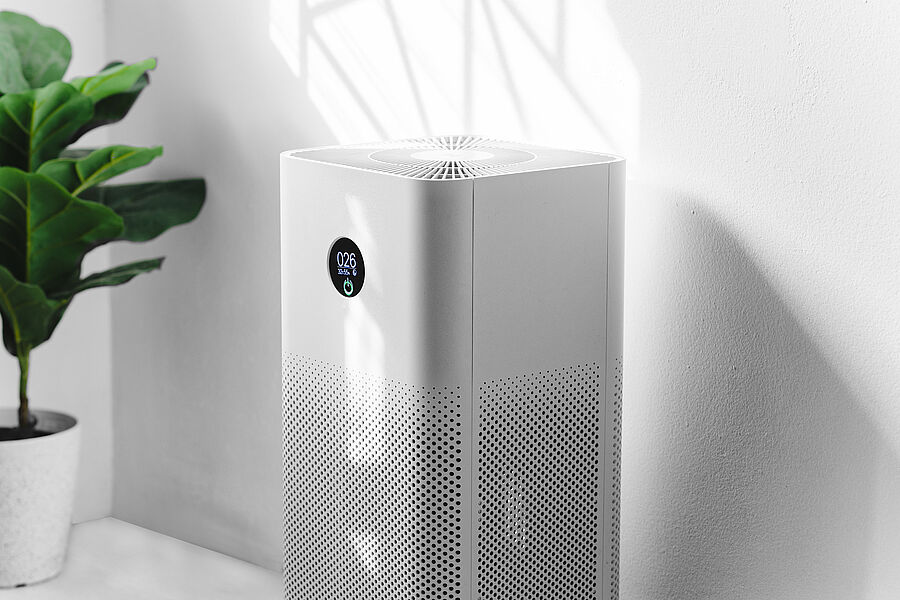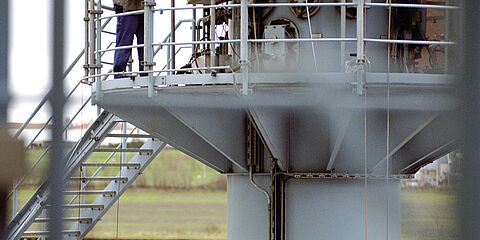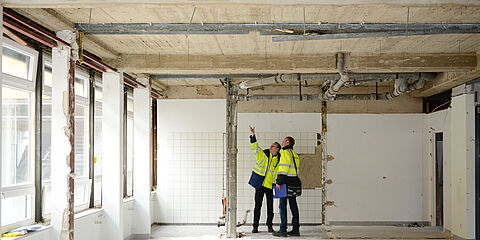How effective are mobile air purifiers?
People spend most of the day indoors. Therefore, the issue of air pollutants in offices and classrooms has been in the spotlight especially since the Corona pandemic. In addition to ventilation concepts, room air purifiers are increasingly being used to reduce aerosols, such as fine dust or viruses, in the air. WESSLING tests the reliability of these purifiers and thereby provides important information regarding the effectiveness and recommended room size for the use of these purifiers.

Tests of room air purifiers in the WESSLING test chamber and under everyday work conditions
Our experts examine room air purifiers in a test chamber, where aerosols are introduced under defined conditions. These aerosols are sodium chloride particles which have the same order of magnitude as, for example, coronaviruses, so their spread in the air can be realistically simulated. The air pollution is measured before, during and after the use of the room air purifier in the test chamber. With this method, it is possible to reproduce very precisely, how long it takes for the particle concentration to be significantly reduced in the air. We also examine the effectiveness of the room air purifiers under everyday work conditions, for example on-site in the office. The measurements show whether the device is sufficient for a room or whether additional devices may need to be installed.
Tests according to the American standard ANSI/AHAM AC-1
In Germany, there is currently no standard for the testing of room air purifiers, so WESSLING analyses the following in accordance with the American standard ANSI/AHAM AC-1 (Test Method for Performance of Portable Household Electric Room Air Cleaners). In deviation from the standard, the test is not carried out with dust, pollen or smoke, but with a salt aerosol. This has a particle diameter of approximately 100 nm and is thus comparable to the coronavirus, which is specified with a diameter of 80-140 nm. [1]
Our services at a glance:
- Determination of the cleaning efficiency by determining the time decay rate of the room air purifier
- Determination of the Clean Air Delivery Rate (CADR) of the room air purifier
- Recommendation of the appropriate room size based on determined CADR according to AHAM AC-1
Your contact
We will be happy to support you.
- André Schmitz
- +49 2505 89-673
- andre.schmitz@wessling.de




